Paeoniflorin
Synonym(s):NSC 178886;Peoniflorin
- CAS NO.:23180-57-6
- Empirical Formula: C23H28O11
- Molecular Weight: 480.47
- MDL number: MFCD00869331
- EINECS: 245-476-2
- SAFETY DATA SHEET (SDS)
- Update Date: 2025-12-26 16:58:18
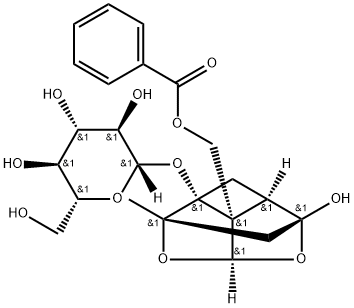
What is Paeoniflorin?
Chemical properties
White powder
The Uses of Paeoniflorin
Paeoniflorin is a herbal constituent extracted from the root of Paeonia albiflora Pall. Paeoniflorin has broad pharmacological effects, such as analgesic, anti-diuretic,anti-inflammatory,anti-convulsant, vasodilatic, and etc. In a study, paeoniflorin effe
The Uses of Paeoniflorin
antiinflammatory, antispasmodic, antihypertensive, antidiuretic
The Uses of Paeoniflorin
Paeoniflorin is an active compound of the Paeonia root. Paeoniflorin inhibits Aβ25-35-induced mitochondrial dysfunction, which includes decreased mitochondrial membrane potential, increased Bax/Bcl-2 ratio, cytochrome c release and activity of caspase-3 and caspase-9. Paeoniflorin could attenuate or restore the viability loss, apoptotic increase, and ROS production induced by Aβ25-35 in SH-SY5Y cells.
What are the applications of Application
Paeoniflorin is a glycoside that activates Adenosine A1-R
Definition
ChEBI: Paeoniflorin is a terpene glycoside.
General Description
Paeoniflorin has been demonstrated to exert anti-inflammatory and immunomodulatory effects.
Biochem/physiol Actions
Herbal constituent of peony root. It is used in Chinese traditional medicine for its spasmolytic and pain-relieving properties. Exhibits anticoagulant, neuromuscular blocking, cognition-enhancing, immunoregulating, and antihyperglycemic effects.
Safety Profile
Moderately toxic by intravenous route. Mildly toxic by intraperitoneal route. When heated to decomposition it emits acrid smoke and irritating fumes.
Properties of Paeoniflorin
| Melting point: | approximate 124℃ (dec.) |
| Boiling point: | 498.51°C (rough estimate) |
| Density | 1.3044 (rough estimate) |
| refractive index | 1.5376 (estimate) |
| storage temp. | 2-8°C |
| solubility | Methanol (Slightly, Sonicated), Pyridine (Slightly) |
| pka | 11.52±0.70(Predicted) |
| form | powder |
| color | white |
| CAS DataBase Reference | 23180-57-6(CAS DataBase Reference) |
Safety information for Paeoniflorin
| Signal word | Warning |
| Pictogram(s) |
 Flame Flammables GHS02  Exclamation Mark Irritant GHS07 |
| GHS Hazard Statements |
H226:Flammable liquids H315:Skin corrosion/irritation H319:Serious eye damage/eye irritation |
| Precautionary Statement Codes |
P210:Keep away from heat/sparks/open flames/hot surfaces. — No smoking. P233:Keep container tightly closed. P240:Ground/bond container and receiving equipment. P241:Use explosion-proof electrical/ventilating/lighting/…/equipment. P242:Use only non-sparking tools. P243:Take precautionary measures against static discharge. P264:Wash hands thoroughly after handling. P264:Wash skin thouroughly after handling. P280:Wear protective gloves/protective clothing/eye protection/face protection. P303+P361+P353:IF ON SKIN (or hair): Remove/Take off Immediately all contaminated clothing. Rinse SKIN with water/shower. P305+P351+P338:IF IN EYES: Rinse cautiously with water for several minutes. Remove contact lenses, if present and easy to do. Continuerinsing. P332+P313:IF SKIN irritation occurs: Get medical advice/attention. P337+P313:IF eye irritation persists: Get medical advice/attention. P370+P378:In case of fire: Use … for extinction. P403+P235:Store in a well-ventilated place. Keep cool. |
Computed Descriptors for Paeoniflorin
| InChIKey | YKRGDOXKVOZESV-WRJNSLSBSA-N |
New Products
4,4-Difluoropiperidine hydrochloride tert-butyl 9-methoxy-3-azaspiro[5.5]undecane-3-carboxylate Indole Methyl Resin N-Isopropylurea N,N-Dicyclohexylcarbodiimide(DCC) MELDRUMS ACID 5-METHYLISOXAZOLE-4-CARBOXYLIC ACID Magnessium Bis glycinate Zinc ascorbate 1-bromo-2-butyne 2-acetamidophenol 9(10H)-anthracenone Erythrosin B, 4-Piperidinopiperidine 2-((4-morpholinophenylamino) (methylthio) methylene) malononitrile 2,4-dihydroxybenzaldehyde 3-(4-morpholinophenylamino)-5-amino-1H-pyrazole-4-carbonitrile Methyl 2-methylquinoline-6-carboxylate 2,6-dichloro-4-nitropyridine 4-Bromo-2-chlorobenzonitrile 2-(benzylamino)acetic acid hydrochloride 4-(tert-Butoxycarbonylamino)but- 2-ynoic acid 3,4-dihydro-2H-benzo[b][1,4]dioxepine 1-Phenyl-1-cycloprppanecarboxylicacidRelated products of tetrahydrofuran

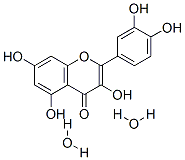
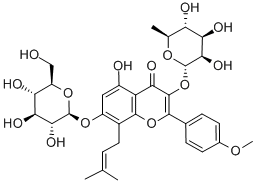
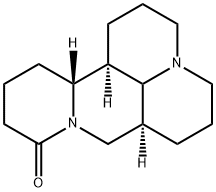
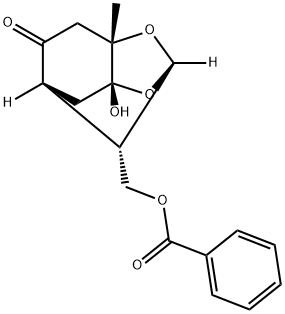
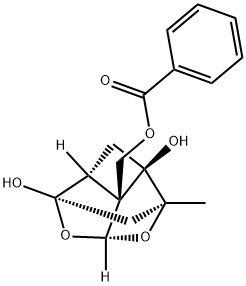


You may like
-
 Paeoniflorin CAS 23180-57-6View Details
Paeoniflorin CAS 23180-57-6View Details
23180-57-6 -
 Paeoniflorin 98% (HPLC) CAS 23180-57-6View Details
Paeoniflorin 98% (HPLC) CAS 23180-57-6View Details
23180-57-6 -
 Paeoniflorin CAS 23180-57-6View Details
Paeoniflorin CAS 23180-57-6View Details
23180-57-6 -
 Paeoniflorin CAS 23180-57-6View Details
Paeoniflorin CAS 23180-57-6View Details
23180-57-6 -
 Paeoniflorin CAS 23180-57-6View Details
Paeoniflorin CAS 23180-57-6View Details
23180-57-6 -
 20677-73-0 (2,2-diethoxyethyl)methylamine 98%View Details
20677-73-0 (2,2-diethoxyethyl)methylamine 98%View Details
20677-73-0 -
 3-(4-(hydroxyamino)-1-oxoisoindolin-2-yl)piperidine-2,6-dione 98%View Details
3-(4-(hydroxyamino)-1-oxoisoindolin-2-yl)piperidine-2,6-dione 98%View Details -
 57381-49-4 2-bromo-4-chlorobenzonitrile 98%View Details
57381-49-4 2-bromo-4-chlorobenzonitrile 98%View Details
57381-49-4
